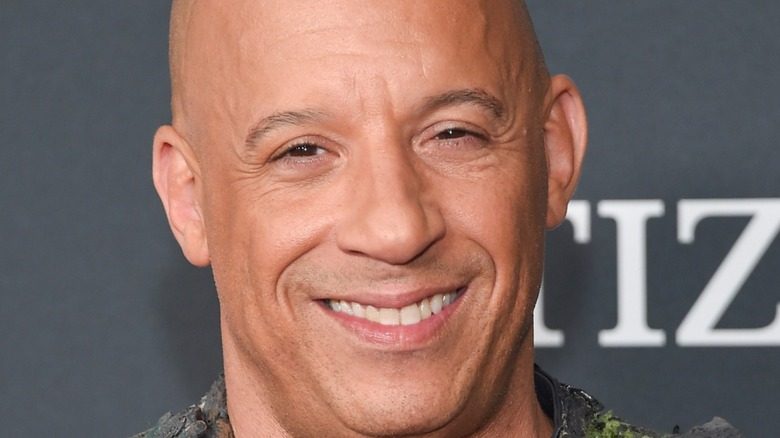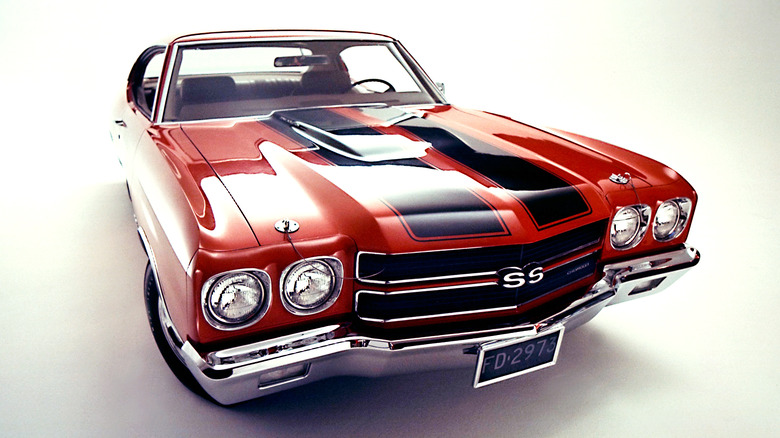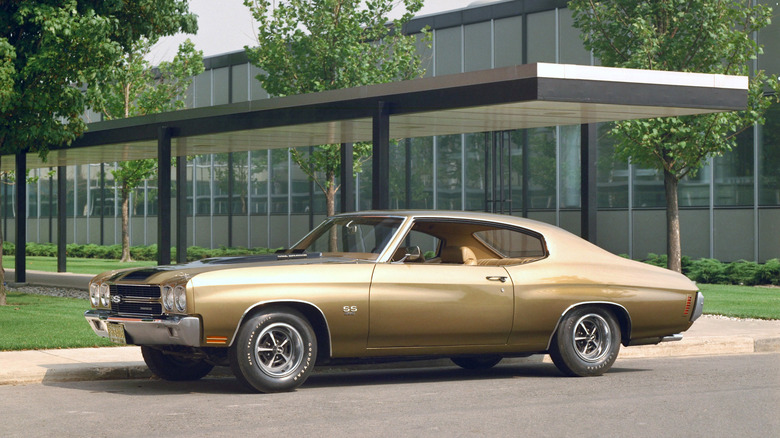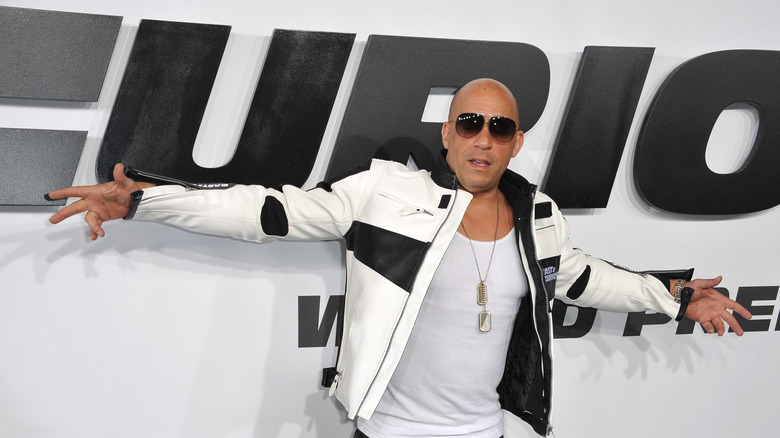Vin Diesel Reveals His True Love From The Fast And Furious Franchise
Vin Diesel of "The Fast and the Furious" fame is mostly associated with a black 1970 Dodge Charger fitted with a host of various speed parts in the films. It's become so iconic there are even Lego sets depicting the car. It's hard not to fall in love with the Dodge Chargers of the late-1960s and early-1970s. That's why it's appeared in so many pieces of pop culture over the past several decades, including "The Dukes of Hazzard," "Bullitt," and multiple "Fast and Furious" movies.
Although Vin Diesel may portray a Mopar-loving speed demon on the big screen, his actual favorite car from the "Fast and Furious" film franchise isn't a Dodge at all — it isn't even a Chrysler product. Vin Diesel's true automotive love comes from the General Motors family. That may seem like heresy to Dodge purists, but the actor's obsession with cars from GM came way before Dom Toretto ever jumped a train track while racing a Toyota Supra.
One of the first muscle cars
Vin Diesel's true pride and joy is a 1970 Chevrolet Chevelle. The actor stated in an interview that the Chevy was "always important" to him. When you consider the fact that one of Diesel's first cars was a 1978 Chevy Monte Carlo, it makes sense why he would stick with GM. It's an incredibly important car that's had an impact on an entire generation of people. For some, it's the peak ideal of a "muscle car."
In "Fast and Furious" lore, Vin Diesel's character, Dom Toretto, has a special connection to the Chevelle. He drives a 1970 Chevelle SS at the very end of the first film. That same Chevelle is later blown up in the fourth film. In the seventh movie of the franchise, Diesel's character is again seen with a Chevelle, this time a souped-up SS 454 model.
Long before the "Fast and Furious" franchise was even a thought, the Chevelle was making waves in the American car scene of the 1960s. Originally, in 1964, the Chevelle was a family car available as not only the coupe we know today, but also as a sedan and station wagon (via Chevrolet). It even served as the basis for the second-gen El Camino. According to Hemmings, Chevy sold more than 300,000 Chevelles during its debut year. In the mid-1960s, GM engineers came to their senses and created the Chevelle SS or "Super Sport," one of the first ever muscle cars. It was made to compete with its corporate enemies like the Plymouth Belvedere and Ford Fairlane.
Like a fine wine, the Chevelle got better with age, and it wasn't until 1970 — Vin Diesel's favorite vintage — that the Chevelle became the dominant muscle car we know today.
General Motors' finest
Perhaps no model of the 1970 Chevelle exemplifies the ideals of a muscle car better than the Chevelle SS 454 and its little brother, the SS 396. The SS 454 was equipped with a positively massive 454 cubic inch "big block" V8. At a displacement of little under seven and a half liters, this super Chevelle's engine was roughly five times the size of an engine you'd find in a new Chevy Equinox. It's no wonder why Vin Diesel is such a fan.
According to Hemmings, SS 454s put out 450 horsepower to the rear wheels and about 500 pound-feet of torque. Those numbers are respectable for muscle cars today, and downright impressive for any car made over 50 years ago. Add in racing stripes, chrome, and a hood the length of an aircraft carrier, and you have a bona fide muscle car legend and one of the best cars 1970s Detroit had to offer. Dom Toretto's Charger in "The Fast and the Furious" may have captured the imaginations of car fans when the movie debuted in 2001, but the Chevelle made the entirety of the muscle car scene take notice decades before the film premiered.
Imitated, but never replicated
Vin Diesel has said that the Dodge Charger is sentimental to him, but his real muscle car pride and joy from the series will always be the Chevelle. Diesel isn't alone either — go to any car show today and you will witness an ocean of Chevelles of every variation. Due to the fact that Chevy sold hundreds of thousands of Chevelles, models from the 1960s and '70s are a staple at car shows all around the country.
If you're in the market to own a Chevelle, original and restored 1970 models routinely cross the auction block. Predictably, Chevelles of this vintage aren't cheap, as a professionally restored SS 396 model auctioned for $54,000 in October 2022. Highly modified convertible models have no difficulty reaching well over six-figures at auction.
The 1970 Chevelle, especially the Super Sport model, are so desirable and beloved that less than honest sellers have even made an entire industry attempting to sell fake versions, reports MotorTrend. Few cars have a dedicated fanbase like the Chevelle and even fewer cars helped define an entire era of vehicle production like it did. When it comes to automotive icons, there are few better than the Chevelle.



